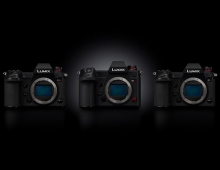
Cameras, iPods need to talk to each other
Your portable music player and digital camera are about to get a lot more friendly with each other.
There are already plenty of MP3 players on the market, including Apple Computer's iPod Photo, that can show digital photos while playing music. But soon, we are likely to see music devices that can download and display pictures directly, without using a computer as a go-between.
That's what Gary Johnson, the CEO of PortalPlayer, says. His company makes the chip for the iPod and several other hard drive-based music players. Johnson was careful not to say whether it will be Apple's player that does this, though. An Apple representative declined to comment.
Johnson said PortalPlayer is also working to make it possible to connect music players to printers.
"It's no good to have a photo if you can't print it," Johnson said in an interview earlier this month.
The big question is how quickly the masses will want such features--and whether they'll pay more for a music player that has a photo side to it. The fact that people can connect an iPod to a digital camera and then connect the iPod to a printer doesn't necessarily mean that they'll want to.
"You have to consider how many people will be comfortable doing that," IDC analyst Susan Kevorkian said. "It certainly could be useful for some segment of customers."
Other companies are looking to bring the photo and MP3 player worlds together through music devices that can take their own pictures--players such as Olympus' M-robe 500i.
Media phones
Cell phones, too, are rapidly adding capabilities to take photos and play music, creating the potential for a single jack-of-all-trades device. While early music-playing phones were on the market some years ago, models with more features and music storage are on the way from the leading makers, including Motorola, Sony Ericsson Mobile Communications and Nokia.
However, the larger market has been for gadgets that do one or two things well and then can communicate easily with other devices. Evidence of that lies in the relatively smaller sales of devices like the Treo and BlackBerry, compared to the success of slightly souped-up cell phones that can exchange data wirelessly with other devices.
Kevorkian said digital photo display capabilities are a natural addition to hard drive-based music players.
"It goes hand in hand with adding a color screen," Kevorkian said. Plus, she said, device makers will be looking for more features to add to fill up the ever-larger hard drives. "Adding digital photos makes a lot of sense as hard-drive capacities continue to grow."
Apple introduced its photo-displaying iPod in October. However, that device can only display photos by connecting to a PC or Mac. Belkin does make a device that attaches to an iPod and allows photos to be stored on the hard drive. However, photos added in that way cannot be displayed on the iPod today without first uploading the pictures to a computer.
Moving pictures
While photo options are one way to beef up a portable player, the other big feature out there is video playback, Kevorkian said. However, such devices, like Archos' new AV4100, still tend to be thought of as a separate category. In general, those devices feature larger screens, making the overall devices considerably bulkier than music-playing devices.
Apple CEO Steve Jobs has been outspoken in criticizing the idea of a video iPod, though the market may grow more interesting to Apple and others if those who make movies and TV shows begin to release more of their content. Apple also criticized the market for flash memory-based MP3 players for some time--and then Apple brought out its flash-based iPod Shuffle last month.
Analysts have said Apple is probably keeping its options open and building the necessary technology to offer a video player, should that market become more interesting and a significant threat to the company's dominant position in the MP3 market.
Indeed, PortalPlayer sees things much the same way. "We did a chip about two years ago that did video," Michael Maia, the company's vice president of sales, said in a December interview. "We didn't see a market for it."
Another feature that many have wanted in the iPod is Bluetooth, a short-range wireless technology. That would allow people to more easily listen to the music on their devices through a car stereo or with wireless headphones. They might also easily share their music with friends' nearby devices. That's also technically feasible, Maia said, but runs the risk of irking music labels unless the music was shared in a way that protects copyrighted files from being duplicated.
"I think it's more of an '06 thing," Maia said. "A lot of people are talking to us about that. "It's really not a technology barrier. It's more of a political barrier."
From News.com





















